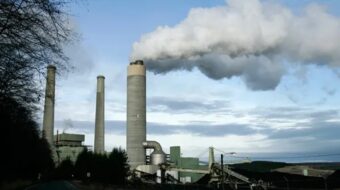
Beware uncertainty! It can cut both ways – something the climate change deniers want us to ignore at our peril.
The well-funded deniers have taken advantage of the great amounts of uncertainty about climate science, climate change, and the interlocking web of life that is nature, the nature on which humanity depends for its existence.
And they have been correct that there has been and continues to be much uncertainty. Climate models and projections are guesstimates, not absolute proof. The world’s climate system is complex and interacts in sometimes unexpected ways.
But the climate change deniers imply, or state outright, that all this uncertainty means that things might not be so bad. They want people to conclude that there is nothing but upside to it.
The problem is that uncertainty can work the other way too. It can mean that things are much worse than we thought – and we already thought they were pretty bad.
For example, one of the uncertainties about climate change has been about exactly how the systems of cloud formation affect climate. Do clouds reflect, deflect, or absorb the sun’s rays? To what degree? Does cloud cover make climate change better or worse? We haven’t known.
But a new study, published in Nature, a scientific establishment journal of record, peer reviewed and fact-checked, shows that as the climate changes and warms significantly, cloud formation changes as well, and a warming climate will decrease our cloud cover. As a result there will be fewer lower-level clouds to ameliorate the earth’s warming.
What this means is that the predictions up til now, based on calculations that did not include any cloud-related factors, have underestimated how much the climate will heat up by the end of the century.
As we learn more, some of the uncertainty disappears. It is replaced by a certainty that if we don’t act soon and in radical fashion to address the causes of climate change, we will sweep past the conservative estimates of 2 degrees Celsius of climate change. That figure might (there’s that uncertainty again) keep climate change from affecting humanity and natural systems in catastrophic ways. But the new calculations, taking into account the new certainties about clouds, project an increase of 4 degrees Celsius (about 7.2 degrees Fahrenheit) by 2100, double the already-dire predictions of mainstream climate scientists.
As other studies have suggested, the most drastic impacts of climate change will likely come from those effects we don’t fully understand yet.
Realistic optimism needs to be based on facts, on reality, on demonstrated understanding of how the world works. The laws of physics can’t be repealed or annulled by legislative action. And the uncertainty about how bad climate change is going to get can mean it will get a lot worse a lot sooner than even the most dire projections of the Intergovernmental Panel on Climate Change, the Nobel Prize-winning United Nations body of scientists charged with evaluating the latest in climate science.
All these predictions can be depressing. But the hopeful signs come from the growing movements around the world for curbing greenhouse gas emissions and addressing the many related environmental problems we face. The divestment movement, the anti-fracking movement, the many cities and states as well as countries that are taking real action, the positive steps from the Obama administration such as regulating existing and future coal-powered plants and increasing auto standards, all will help, even though they are not yet anywhere near enough to address the enormity of the problems. What is needed is a massive worldwide movement, inclusive of many organizations, many strategies, and many fronts.
Photo: Flickr (CC)











